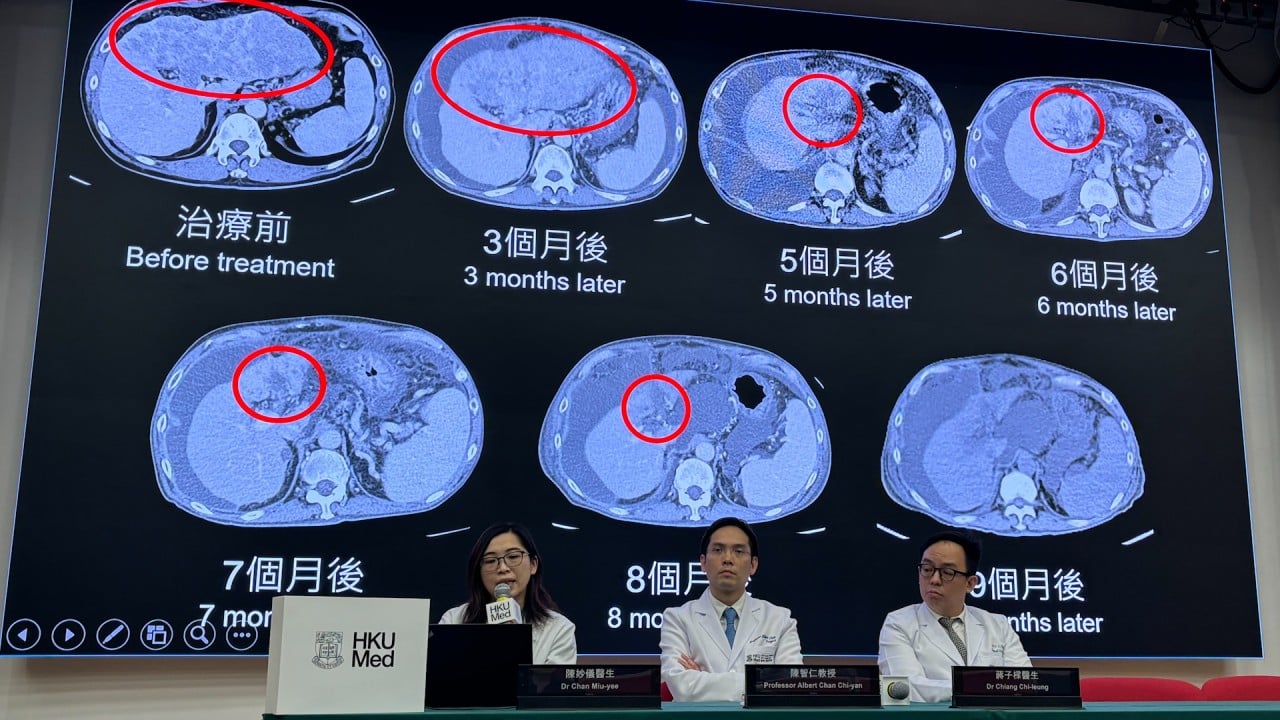
Chinese nuclear weapons scientists build X-ray machine hailed as potential ‘holy grail’ for cancer treatment
- Powerful ‘Flash’ irradiation system can deliver high-energy radiation and has the potential to revolutionise conventional radiotherapy
- Researchers are still unravelling how and why it works but are excited by the possibility of breaking the bottleneck of radiation dosage
A group of Chinese researchers, mainly from institutes involved in nuclear weapons and related scientific research, have built a powerful irradiation system known as “Flash” that can deliver extremely high-energy radiation and has the potential to revolutionise conventional radiotherapy.
Their prototype can generate an energy or “dose rate” of more than 80 gray (Gy) per second – a unit used to measure the amount of radiation absorbed by an object or person. Although both current treatments and the team’s prototype use X-rays as the radiation source, the new system generates much more than the 0.5 to 20Gy per minute of conventional radiotherapy.
Their results show that the same amount of radiation could be delivered in much higher-intensity bursts of less than a second – a significant advance on current radiation treatment that has been plagued by toxicity to surrounding non-malignant tissue when killing tumours. Extremely high-energy irradiation might be one way out.
“Although there have been similar repeated experiments, both domestically and internationally, ultra-high dose rate high-energy X-rays that meet clinical requirements have not been achieved,” the researchers said in a paper on the new system.
But they announced that their machine met the clinical ultra-high dose rate requirement of more than 40Gy per second.
The advance was reported in the Chinese academic journal High Power Laser and Particle Beams in December, co-authored by researchers from institutes including the China Academy of Engineering Physics in Sichuan province and Harbin Engineering University in northeastern China.
“We have reached a bottleneck where our mastery of energy beams could not take us to a better place,” said Zhang Yingying, an oncologist at Xiangya Hospital of Central South University in Hunan Province. “We know the limits of safe radiation doses for human tissues and it prevents us from pursuing more effective treatment.”
Over the past decade, repeated trials have shown that this issue could be significantly improved by using ultra-high rates of radiation dose, typically above the 40Gy per second threshold, to achieve the same anti-tumour effect while sparing much more healthy tissue – an effect called “Flash”.
Flash is the most exciting frontier of radiotherapy technology and scientists, clinicians and engineers have been pushing its development.
In the 1960s, two scientists first observed that bacteria were more resistant to ultra-high dose rates of radiation than to conventional intensity. However, it was not until the 2010s that this phenomenon began to spark enthusiasm in the academic community.
At that time, experiments were carried out by researchers from the Institut Curie and the Institut Gustave Roussy in France and the Centre Hospitalier Universitaire Vaudois (CHUV) in Switzerland. Their landmark study published in 2014 showed that extremely high-intensity of radiation could induce the same anti-tumour effects, but with significantly less damage to normal tissue.
When Zhang first heard about the Flash effect, she described feeling “excited” at the possibility of breaking this bottleneck. “We are pinning our hopes on Flash to crack this long-standing puzzle,” she said.
Yang Gen, a professor of medical physics and engineering at Peking University who was not involved in the study, described Flash as the future of treatment.
“The radiotherapy used in hospitals today is mainly based on technology from a century ago, and the newer proton and heavy ion treatments are based on physical theories from 80 years ago, while Flash is the next-generation technology”.
Flash eclipses conventional radiotherapy by requiring patients to undergo fewer and much shorter treatment sessions.
“If you compare the energy output per unit of time, Flash could be tens or even hundreds of times higher than current methods,” Zhang said, indicating that treatment that has required numerous sessions could now be reduced to just one or two.
But even more tantalising is the potential for doctors to target tumours more effectively and significantly reduce the intimidating side effects of radiotherapy.
“It could be a ‘holy grail’ of radiotherapy,” said Steven Lin, a radiation oncologist at MD Anderson Cancer Centre in the United States, in an article published by the institute in September.
Zhang said what impressed her most about the latest machine was not the dose rate but the source of the energy.
“In previous studies to achieve the Flash effect, the radiation sources were mainly based on protons or electrons, whereas this Chinese team uses photons, or X-rays,” she said.
Proton radiotherapy at conventional doses is already used in practice. Its energy decays after reaching a peak, causing less damage to healthy tissue and making it suitable to treat some thorny cancers such as spinal cord oncology in children. But the machines are expensive and bulky – some are as big as a basketball court.
The 80.5Gy per second achieved in this paper was not a very high value in itself, Zhang said, with Flash radiation delivered by modified proton-based prototype machines reported to reach hundreds, or even thousands of units of energy. But X-rays are the most widely used technology in radiotherapy, and the machines used are much more compact.
Electron beams, on the other hand, had limited medical applications because they could not penetrate far or effectively treat deep tumours, Zhang said.
In their paper, the authors said their machine was comparable in size to existing radiation machines in hospitals, known as “medical linear accelerators”, and if successfully developed would be easier to install and access.
“It is not easy to achieve these metrics with a miniaturised machine,” said Yang Gen. He said exceeding 80Gy was a performance milestone.
Although it generates excitement, Flash therapy is still in its early stages. The earliest researchers have just brought it into clinical trials.
Scientists at Cincinnati Children’s Hospital Medical Centre in the US, in collaboration with medical device company Varian, have completed a phase 1 clinical trial of 10 participants with promising early results, according to a study published in the Journal of the American Medical Association Oncology in 2022.
The benefits of Flash have been replicated in more than 30 studies but researchers are still unravelling how and why it works.
“We have observed this phenomenon, but we have not yet worked out its biological mechanism,” Zhang said.
“There are still too many questions to be investigated, such as what are the optimal dose rates for different organs, so it is not yet ready for clinical application.”
Another obstacle is the lack of a dedicated machine for Flash. Worldwide, there are only a few prototype machines used for studies in laboratories and not designed for patient use, she said, adding that she was conducting research with scientists at Tsinghua University because her hospital did not have the facility.
Some biotech companies specialising in radiotherapy equipment that recognise the huge medical potential and market gap, have acted. The French company Theryq, together with CHUV in Switzerland and the European Laboratory for Particle Physics (CERN), announced at the end of 2022 they would jointly develop the world’s first Flash radiotherapy machine. Their first clinical trials are planned for next year.
The Chinese researchers announced that their prototype X-ray Flash radiotherapy machine would be made available to the public and they plan to use it as a platform for preclinical and clinical studies.
“There is still a lot to learn,” radiation oncologist Lin said. “We have to be careful and not let the excitement about the potential keep us from our careful approach in research.”



